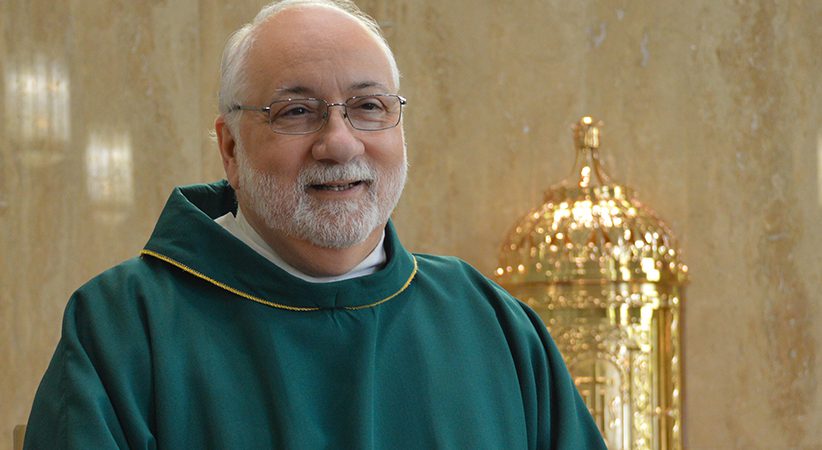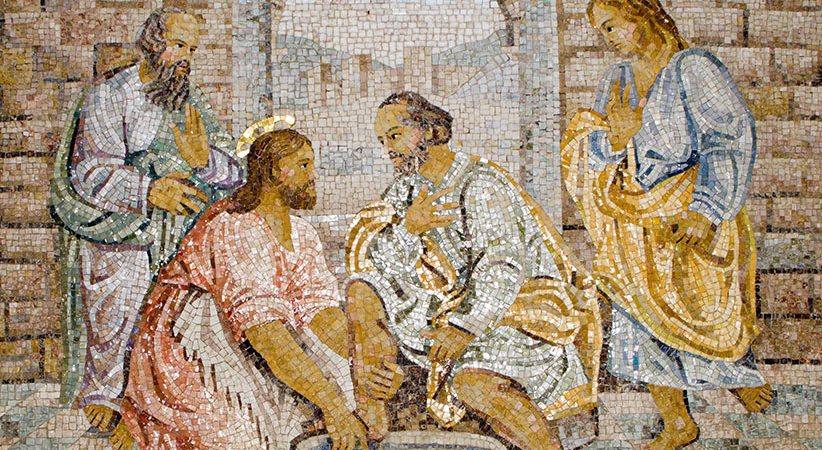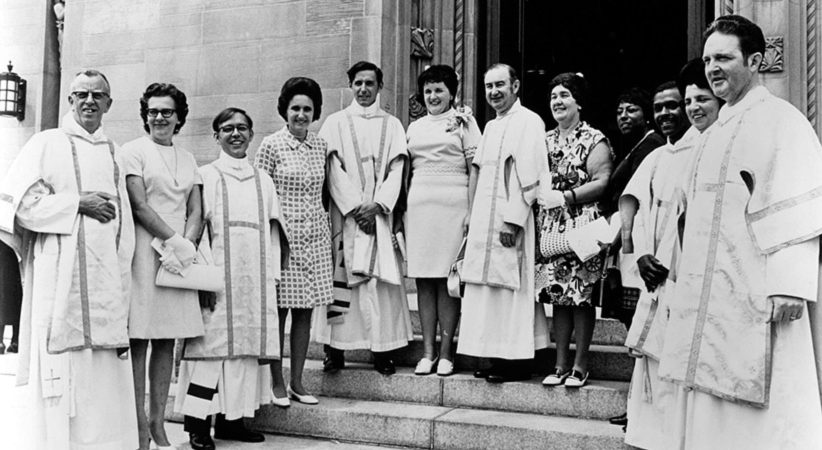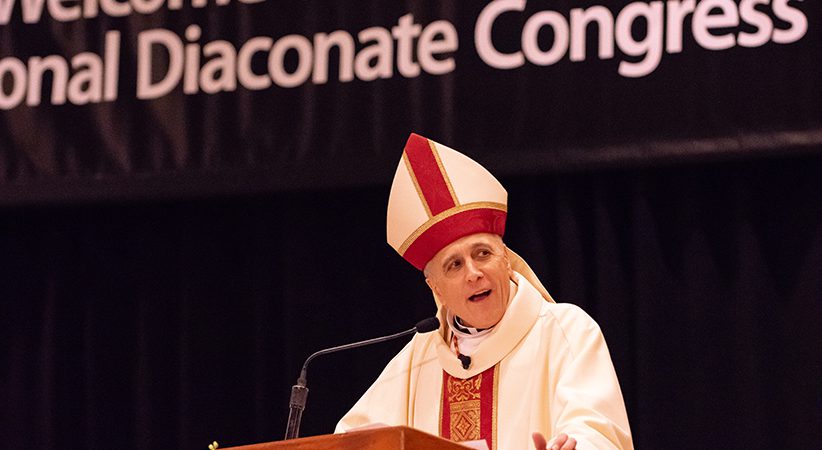Technological Reproduction and Human Dignity
Understanding what the Church teaches — and why it matters
Deacon Thomas Davis Jr. Comments Off on Technological Reproduction and Human Dignity
The birth of a child is a defining event in family life. It usually is marked by cultural and religious ritual. Catholic families often begin preparation for baptism before a child’s birth: selecting godparents and Scripture readings, setting dates and planning the celebration. Yet reliable data suggests that at least 10 percent of couples experience difficulty in conceiving a child, and rates increase with age as fertility declines. In their 30s, women are about half as fertile as they are in their early 20s, and their chances for conception decline significantly after age 35. Male fertility also declines with age, but more gradually.
In our technological society, spouses experiencing infertility understandably seek assistance from medical professionals. And why not? Popular media is awash with reports of family members or friends acting as surrogate mothers or bearing someone else’s in vitro conceived child. But it’s more complicated than it looks from TV or film. The options, costs and, at times, dehumanizing modalities offered may cause confusion and reticence for couples.
A host of medical, legal, psychological and moral issues arise with assisted reproductive technology (ART). This article will focus on the moral issues, some of which overlap with the other categories. In clearly presenting Catholic teaching on ART, deacons are offered a graced opportunity for ministry.
Gamete Donation
In vitro fertilization (IVF) requires donor sperm and egg. Typically the man is asked to masturbate into a receptacle, while the woman undergoes hormonal treatment to mature multiple eggs that are then harvested from her ovaries. Donor gametes often are obtained from strangers, raising additional issues. While these issues are not addressed in TV shows, they are directly addressed by Catholic doctrine.
In Persona Humana (1975) the Congregation for the Doctrine of the Faith affirmed the perennial teaching that solitary sexual acts are immoral. The principal reason is that “the deliberate use of the sexual faculty outside normal conjugal relations essentially contradicts the finality of the faculty. … It lacks the sexual relationship called for by the moral order, namely the relationship which realizes ‘the full sense of mutual self-giving and human procreation in the context of true love’” that are central elements of marriage. In other words, the sexual faculty was made for marriage, where it is to be shared by a man and woman who have committed themselves to a lifelong union of mutual self-donation and sacrifice. Masturbation, regardless of the end pursued, directly contradicts that meaning.
Perhaps more startling is the practice of gamete donation. Typically it is not a donation at all, but a fee-based commercial transaction, often involving participants with vastly unequal bargaining power, telltale indicia of exploitation. In some cases, persons possessing a desired feature, such as high IQ or athleticism, or a certain color of skin, hair or eyes, or otherwise perceived by society as physically attractive, are recruited for the process. Obviously this feeds the troubling prospect of designer babies and is imbued with a utilitarian value system alien to authentic Christianity.
Frequently women of modest or even destitute means are lured into the practice by promises of cash payments without adequate understanding of the medical risks involved.
The superb documentary film “Eggsploitation” thoroughly explores the dark side of these practices, including the health and safety risks to which women are subjected. Ova harvesting, preceded by intramuscular administration of powerful hormones, may result in serious complications.
Infertility: Examination, Treatment and Options
Directly related to gamete donation is the question of its purpose. Sometimes it might be related to fertility examination of seminal fluid and sperm when a couple is experiencing prolonged difficulty in conceiving. In such cases, practices are available that do not involve masturbation, principally use of a perforated seminal collection device during sexual intercourse. No violation of the moral law is involved in that situation. And a solitary female gamete can be harvested as well without exposure to hormonal hyperstimulation. Excellent and morally sound resources are readily available for those experiencing difficulty in conceiving through NaPro Technology, a holistic, science-based approach best known through the work of the St. Paul VI Institute for the Study of Human Reproduction (PopePaulVI.com), located in Omaha, Nebraska.

Helpful advice and resources on infertility also are offered by the bishops’ conference by searching “USCCB” and “infertility.” Critical distinctions between various natural and technological reproductive interventions are made between those compatible with the Catholic faith, those inconsistent with Catholic teaching and those about which legitimate debate exists.
In the first category are natural family planning, medical evaluation of both spouses for infertility, post-coital tests to assess sperm number and viability in fertile mucus, treatment of male factor deficiency, assessment of uterine and tubal structural competence by imaging techniques, treatment of ovulatory dysfunction and even surgical correction of blocked fallopian tubes.
Those incompatible with Catholic teaching include artificial insemination with sperm donated by a nonspouse or with a husband’s sperm obtained by immoral means, IVF, zygote intra-fallopian transfer (ZIFT), intracytoplasmic sperm injection (ICSI), ovum donation or utilization of a surrogate mother.
Techniques open to debate include gamete intra-fallopian transfer (GIFT) (an aspirated ovum, separated by an air bubble from licitly obtained and prepared seminal fluid, are then reinserted into the woman’s fallopian tube, where conception may occur within her body), and intrauterine insemination (IUI) of semen obtained through normal sexual intercourse but technologically prepared for injection into the uterine cavity, bypassing the cervix, where testing has identified “hostile” cervical mucus that induces an adverse immunological reaction to sperm.
The rule of thumb offered by the USCCB is procedures that assist marital intercourse in reaching its procreative potential are moral; those that add a third party to the act of conception, or which substitute a laboratory procedure for intercourse, are not acceptable.
In Vitro Fertilization
The intention usually associated with gamete harvesting is to participate in IVF, the most popular method of assisted reproductive technology, and something many faithful Catholics are unaware directly contradicts Church doctrine.

Central to any analysis of IVF is the recognition that a human embryo is a human being, with its own genetic code and who is an independent member of the human family. While some intra-Catholic debate remains as to whether a single cell or primitive embryo of only a few cells possesses an immortal soul, it is unquestionable that any doubt regarding that issue demands the presumption of ensoulment and all of the respect due a person, a firmly established magisterial teaching that is decisive for the resolution of the moral question. It means that certain duties of parents to their children arise once the embryo comes into being, including the duty to love, protect, nurture and cherish their child. And there also arises at the same time the inalienable right of the child to life.
Almost all IVF procedures are designed to produce multiple embryos. Two reasons drive that reality. First, there is a presumption that some embryos will be defective. Typically all IVF embryos are subjected to pre-implantation diagnostic testing, and those showing indications of certain deficiencies are discarded as wastage. Put less obscurely, they are killed. Hyperovulation and consent to the creation of multiple embryos usually carries with it the conditional intention to kill any that do not satisfy predetermined criteria. That in itself constitutes grave matter implicating the Fifth Commandment, as well as the transformative command to “love one another.”
Similar concerns arise when multiple embryos are transfered (ET) into the womb. Multiple transfer increases likelihood of multiple implantations, and that means a greater chance of twins, triplets or more. When multiple pregnancies develop, the prospect of selective reduction arises. Selective reduction is another name for abortion. It is a standard option offered a mother carrying multiple children as a consequence of multiple ET and, in some cases, is strongly recommended by the medical professionals involved.
Surrogacy
Sometimes IVF is pursued with the engagement of a surrogate mother. At the moral level, the practice is evil. It is predicated on a contractual relationship, the terms may require multiple ET and selective reduction if multiple implantations occur. Birth mother-baby bonding is highly likely, but it will be interrupted by the surrender of the child to the contracting parent(s). The psychological and emotional issues may be immediate or may arise years down the road. And those consequences may affect not only the surrogate, but other family members, such as a future husband or children. Her own self-image may be adversely affected by the experience, reinforcing a mistaken idea that she is somehow a separate psychological or “spiritual” being of which her body is merely an instrumentality.
The idea that the real “me” is an affective nonmaterial reality essentially distinguishable from one’s corporeal form is widely evident in modern culture. It denies the nature of the human person as a communion of body and soul — a central teaching of the Catholic faith. The divorce of those dual aspects of human nature is even more strikingly adopted by the transgender movement and its supporters who thereby reject, perhaps without full understanding, the prerogative of God as creator and his fashioning of a soul suited to the masculine or feminine identity of each individual.
Surrogacy might not involve IVF at all, but might employ artificial insemination or another dehumanizing practice euphemistically termed “natural insemination.” That is simply sexual intercourse to generate pregnancy by someone who will remain a stranger to the child. While the practice might occur between anonymous strangers or friends, and be fee-based or not, it needs little moral analysis. Extramarital sex cannot be reconciled with Catholic teaching and the words of sacred Scripture (cf. 1 Cor 6:9; Eph 5:5).
Whether surrogacy arises through natural or artificial insemination, it likely will generate psychological trauma. The famous case of Mary Beth Whitehead in 1986 involved an artificial insemination surrogacy contract. After turning her own biological child over to the contracting biological father, Whitehead reportedly kidnapped the baby back, and a protracted legal fight ensued, resulting in the award of custody to the father. That Whitehead should develop a strong maternal bond with her own child is no surprise, nor would such a bond be unexpected even when the child is a genetic stranger.
………………………………………………………………………………………………………………………………………………………………………………………………..
CHURCH DOCUMENTS
Donum Vitae: Instruction on Respect for Human Life in Its Origin and on the Dignity of Procreation — Replies to Certain Questions of the Day (1987)
Dignitas Personae: Instruction of Certain Bioethical Questions (2008)
Summary Regarding the Instruction Dignitas Personae (2008)
Evangelium Vitae: Encyclical letter of Pope St. John Paul II (1995)
Humanae Vitae: Encyclical letter of Pope St. Paul VI (1968)
Declaration on Procured Abortion (1974)
Persona Humana: Declaration on Certain Questions Concerning Sexual Relations (1975)
…………………………………………………………………………………………………………………………………………………………………………………………………
Conclusion
IVF separates the child from the unitive and procreative intimacy of the parents to which he or she is entitled. This is explained in Donum Vitae, the 1987 teaching from the CDF, which states: “Procreation is deprived of its proper perfection when it is not desired as the fruit of the conjugal act. … In order to respect the language of their bodies and their natural generosity, the conjugal union must take place with respect for its openness to procreation; and the procreation of a person must be the fruit and the result of married love. … Fertilization achieved outside the bodies of the couple remains by this very fact deprived of the meanings and the values which are expressed in the language of the body and in the union of human persons” (No. 4).
It should be evident that the rejection of the Church’s teaching on contraception has paved the way for acceptance of IVF and other techniques that produce human beings outside of the mother’s body. The failure of the Church to communicate in an effective way the essential moral nexus between marital sexual union and openness to procreation has had disastrous consequences. One small remedial step is honest presentation of the teaching on technological reproduction.
DEACON THOMAS DAVIS JR. is a deacon of the Melkite Eparchy of Newton, Massachusetts. He is the director of the St. John Paul II Bioethics Center at the Liberty Institute for Faith & Ethics (L.I.F.E.).





